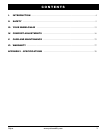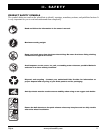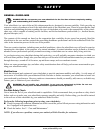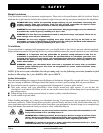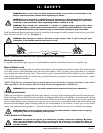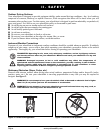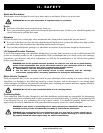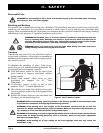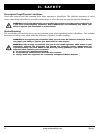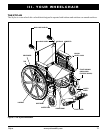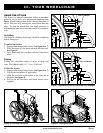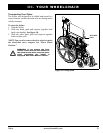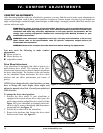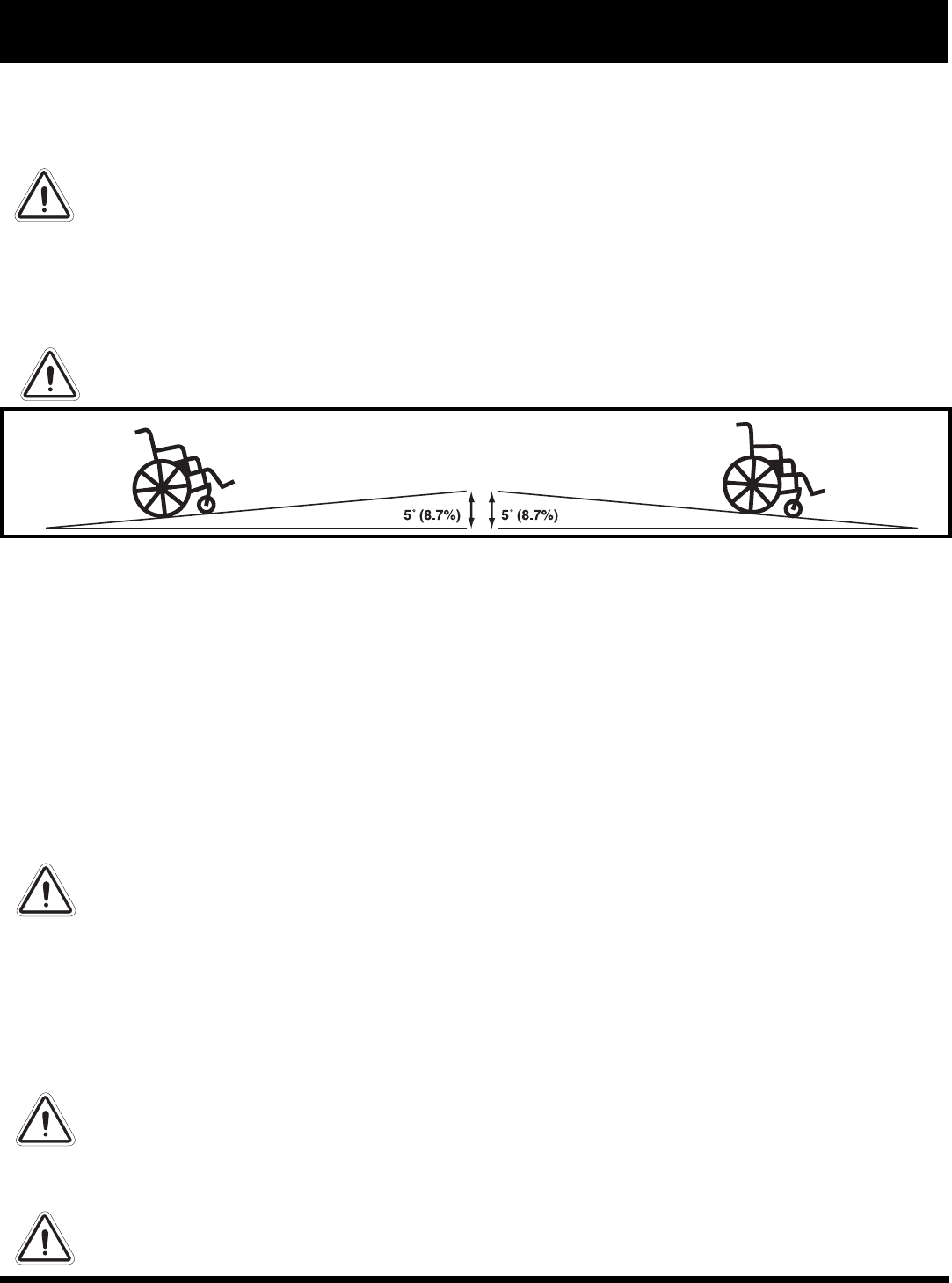
8 www.pridemobility.com Stylus
WARNING! Never travel down an incline backward. Doing so may cause the wheelchair to tip.
Always exercise extreme caution when negotiating an incline.
WARNING! If your wheelchair is equipped with an optional carry bag mounted to the seatback,
do not overload the bag or exceed the maximum load rating of the bag. Doing so could cause
instability in your wheelchair when negotiating inclines, causing it to tip.
WARNING! Even though your wheelchair is capable of climbing slopes greater than those
illustrated in figure 1, do not, under any circumstances, exceed the incline guidelines or any other
specifications presented in this manual. Doing so could cause instability in your wheelchair.
Pride recommends that the maximum slope of an incline you attempt to safely ascend or descend on your wheel-
chair does not exceed 5° (8.7%). See figure 1.
WARNING! Any attempt to climb or descend a slope steeper than 5° (8.7%) may put your
wheelchair in an unstable position and cause it to tip.
II. SAFETY
Figure 1. Recommended Maximum Safe Slope (Ascending and Descending)
Braking Information
To stop the wheelchair, apply pressure to both handrims until the wheelchair comes to a complete stop.
Manual Wheel Locks
Your wheelchair is equipped with two manual wheel locks; one mounted on each drive wheel. The manual wheel
locks help prevent your wheelchair from moving when parked. After you bring your wheelchair to a complete
stop, engage both manual wheel locks. There are two types of manual wheel locks available on your wheelchair:
push-to-lock and pull-to-lock. If you have any questions about the operation of your manual wheel locks, contact
your authorized Pride Provider.
NOTE:
Pride does not recommend that you remain parked on an incline for a long period of time
as your wheel-
chair may slide or the the manual wheel lock may become disengaged after extended use.
WARNING! Do not attempt to use either manual wheel lock lever to stop your wheelchair.
Cornering Information
While your wheelchair is equipped with front caster wheels, excessively high cornering speeds can still create the possi-
bility of tipping. Factors which affect the possibility of tipping include, but are not limited to: cornering speed, steering
angle (how sharply you are turning), uneven road surfaces, inclined road surfaces, riding from an area of low traction to
an area of high traction (such as passing from a grassy area to a paved area – especially at high speed while turning), and
abrupt directional changes. High cornering speeds are not recommended. If you feel that you may tip over in a corner,
reduce your speed and steering angle (i.e., lessen the sharpness of the turn) to prevent your wheelchair from tipping.
WARNING! When cornering sharply, reduce your speed and maintain a stable center of gravity.
This greatly reduces the possibility of a tip or fall.
Public Streets and Roadways
WARNING! You should not operate your wheelchair on public streets and roadways. Be aware
that it may be difficult for traffic to see you when you are seated on your wheelchair. Obey all
local pedestrian traffic rules. Wait until your path is clear of traffic, and then proceed with
extreme caution.





